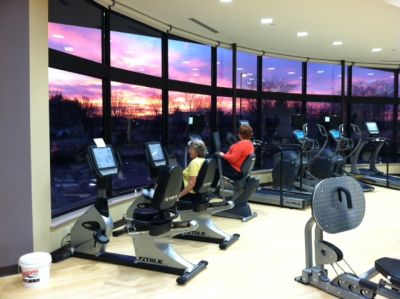Exercise Testing

In October, Goshen College kinesiology students in the Exercise Testing class (KIN 375) studied and practiced testing relevant for elders, prior to going to the Greencroft retirement community to conduct senior fitness and balance testing. Approximately 40 elder clients, ages 64-88 years old, were cleared for participation in the standard Senior Fitness Test battery and seven of the Advanced Fullerton balance test items. After testing, J. Lehman, the course professor, analyzed the results and followed up with each client in writing, providing his/her scores, analysis, a summary of the results and what they mean. Suggestions for exercise and balance activities were included with the results. Clients were encouraged to practice the recommended activities and to test again in December.
In December the class returned and administered the same tests again to volunteer clients. Nineteen (48%) of the clients who completed the pre-testing also completed the post testing. This time, the Goshen College students analyzed the results and wrote the follow up summaries for the clients. The course professor reviewed the results and student analysis and comments, then sent them on to the Greencroft clients.
Balance testing summary:
According to the results (Table 1), many participants (16) improved their scores thereby lowering their risk of falling due to balance issues. Two clients moved from the high risk category to the moderate category while four moved from the moderate to the low risk category. Twelve stayed in the same category although most scored more points which indicated improved balance but not enough to move into a new category. One client scored fewer points on the posttest than the pre-test. In general, these results suggest that many clients improved balance during the time period between tests.
Table 1: Balance testing results those completing pre and post testing
| Risk of falling due to balance issues | Pre testing (Oct 2) | Post testing (Dec. 2) |
| Low risk | 53% (n =10) | 74% (n =14) |
| Moderate risk | 31.5% (n = 5) | 21% (n = 4 ) |
| High risk | 15.5% (n = 3) | 5% (n = 1) |
Fitness test results summary:
On the Senior Fitness Test battery, between 44-80% of participants improved on the test scores in each item. This constituted a majority on five of the six tests. Table 2 shows the pre and posttest percentages of clients who scored above average, average or below average on each test item. Additionally this table shows what percentage of people improved, stayed the same and decreased from the pre to the post test.
Upper body strength was above average or average for most people in this group with only one person not achieving above the 25th percentile. Some clients scored the same and some scored lower on the post test for some of the items. The 2 minute step test was the greatest challenge for clients as their legs tired and/or they became winded prior to or near the end. This caused most of them to reduce the step height and it was difficult to monitor which steps were high enough. Many clients voluntarily stopped prior to the 2 min. time period. As such, we questioned the validity and reliability of the results for the 2 minute test. Recommendation for future testing would be to use the six minute walk test, a different cardiovascular test included in the senior fitness test battery. The six minute walk test is more straight forward and easier to conduct, but requires more space. Lower scores on the post test could be attributed to a number of different factors such as the ceiling effect, client variables, testing variables or motivation.
Overall these results suggest it is possible for most elder clients to improve their fitness scores on the senior fitness test battery within eight weeks of regular exercise.
Table 2: Senior Fitness Test results for those who completed both the pre and post testing
| Measurement variable | Test | Percentage above average on post test | Percentage average on post test | Percentage below average on post test | Percentage of people who improvedfrom pre to post | Percentage who stayed in the same category | Percentage scoring lower on post test |
| Lower body strength | Chair stand | 37 | 53 | 11 | 67 | 11 | 22 |
| Upper body strength | Arm curl | 63 | 32 | 5 | 74 | 5 | 22 |
| Cardiovascular endurance | 2 min. step test | 18 | 35 | 47 | 44 | 5 | 50 |
| Lower body flexibility | Chair sit and reach | 32 | 47 | 21 | 65 | 18 | 18 |
| Upper body flexibility | Back scratcher | 21 | 62 | 26 | 59 | 24 | 18 |
| Motor agility | 8 ft. up and go | 5 | 63 | 32 | 80 | 0 | 20 |




